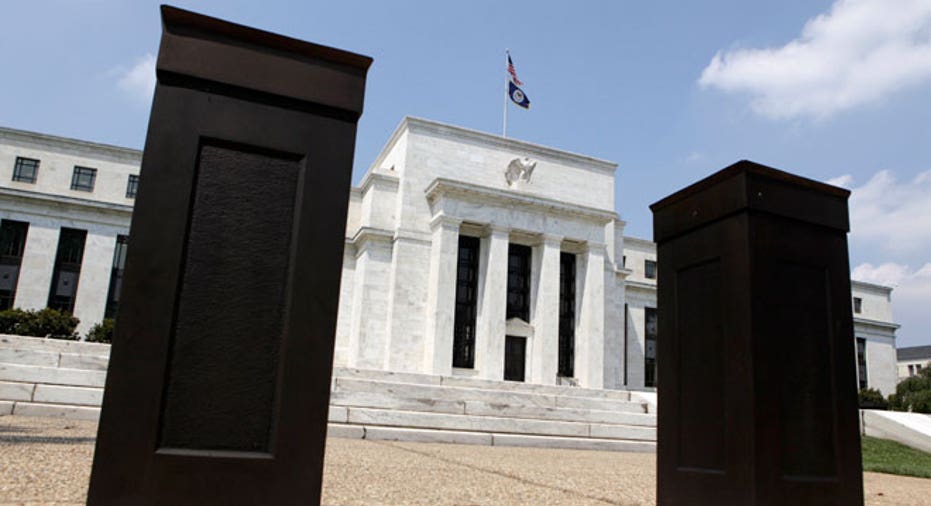Fed Continues Reducing Monthly Asset Purchases By $10 Billion

Ben Bernanke’s tumultuous tenure as chairman of the Federal Reserve effectively concluded Wednesday with the Fed’s policy-making body deciding to continue reducing its monthly bond-buying program by another $10 billion.
In a unanimous vote, the members of the Federal Open Market Committee decided that in February the Federal Reserve will purchase $30 billion in mortgage-backed securities and $35 billion in Treasurys.
In its policy statement, the committee noted that “labor market indicators were mixed but on balance showed further improving.”
As it did in its December statement, the FOMC said it would “likely reduce the pace of asset purchases” if labor and market conditions improve. It stressed the asset purchases are “not on a preset course.”
As for maintaining historically low interest rates, the committee said, as it did in December, that “it likely will be appropriate to maintain the current target range for the federal funds rate well past the time that the unemployment rate declines below 6.5%, especially if projected inflation continues to run below the Committee’s 2% longer-run goal.”
Analysts widely expected the Fed to continue reducing its monthly asset purchases, a process known as tapering.
“A 3.5% decline after a 30% up year is not something that the Fed is necessarily going to panic about,” said Julia Coronado, the chief economist for North America at BNP Paribas, before the Federal Reserve’s announcement. “The US data have certainly confirmed their hopes and so far so good.”
On Saturday, Bernanke hands the direction of the Federal Reserve and $10-billion-a-month in asset purchases to Vice Chairman Janet Yellen.
In December, amid signs the economy was strengthening, Bernanke and his fellow members of the Federal Open Market Committee voted to reduce their bond purchases, known as quantitative easing, from $85 billion a month to $75 billion beginning in January.
Stock markets continued their climb before selling off in the middle of January. Before the pullback, minutes of the FOMC’s December meeting reported some Fed members had expressed their concern about tapering bond purchases and “stressed that the unemployment rate remained elevated, that a range of other indicators had shown less progress toward levels consistent with a full recovery in the labor market, and that the projected pickup in economic growth was not assured.”
During his December press conference, Bernanke backed the decision to taper but acknowledged the Fed would consider increasing its bond purchases “under some circumstances” should the economic recovery stall.
Appointed by President George W. Bush, Bernanke assumed the chairmanship of the Federal Reserve on February 1, 2006, and was thrust into the financial crisis shortly thereafter.
Bernanke’s critics have faulted him for missing signs of the looming crisis. In March of 2007, he said turmoil in the subprime mortgage market was “likely to be contained.”
The Fed followed with a dramatic response to the financial crisis, including cutting interest rates to historically low levels and flooding trillions of dollars into the economy and financial system in emergency loans and asset purchases.
Its vastly expanded role in the global economy also led to calls for more detailed independent audits of the Fed and charges of secrecy. FOX Business Network challenged the Fed’s refusal to divulge its emergency lending activities during the worst of the financial panic. In March of 2011, the courts sided with FOX Business and the network revealed that the Fed propped up some of Europe’s most troubled banks with tens of billions of dollars in revolving credit.
Concerns about the Federal Reserve’s activities also prompted a Bernanke campaign to greater openness, including instituting a chairman’s press conference each quarter.